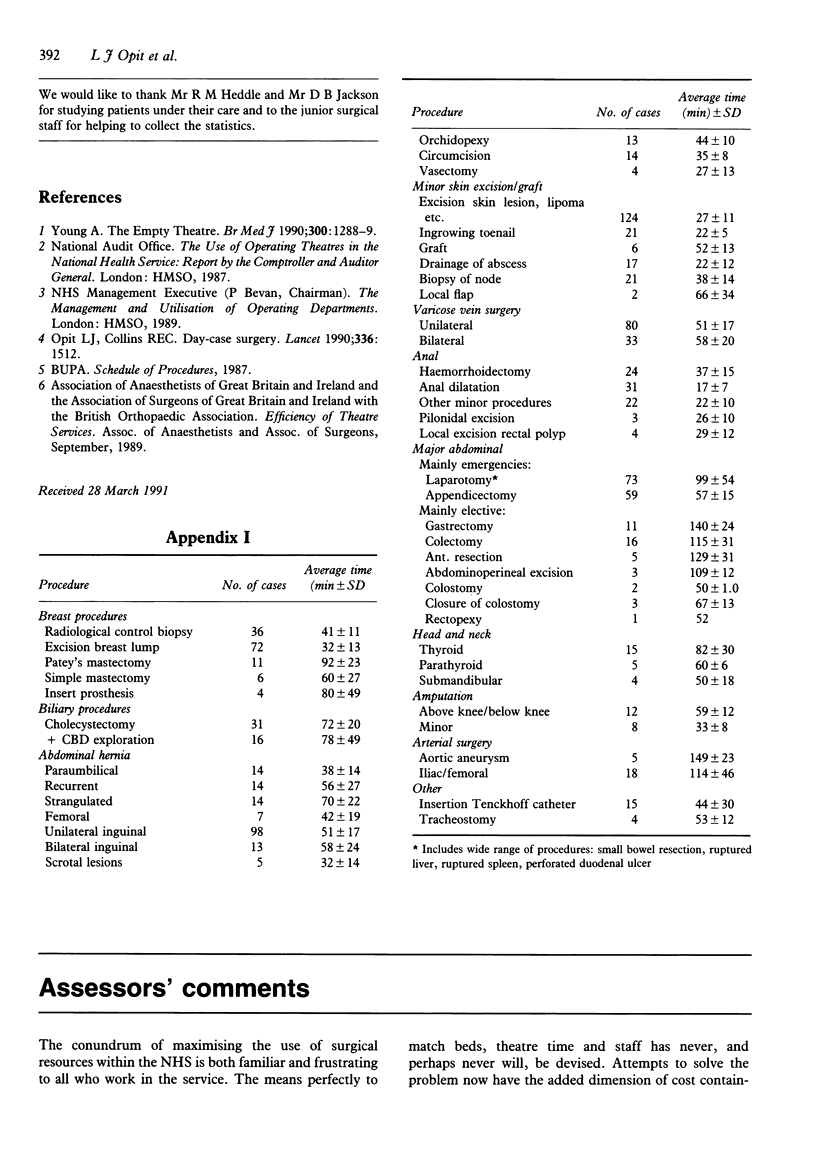Abstract
Details of theatre occupancy times for a surgical unit in a district general hospital and associated cottage hospital were recorded over a 4-month period. The average time of the procedures individually and reclassified within the BUPA schedule showed that both the severity of the procedure and the grade of surgeon influenced future theatre needs. For almost every type of procedure, as expected, consultants were quicker than registrars, who in turn were faster than SHOs. The hidden cost of training surgeons in general surgical operative procedures can be estimated as a result. It is concluded that current measures of resource use which rely only on the bed use and ignore operating theatre needs and training requirements for non-consultant grades will be misleading, particularly in relation to the large element of minor or intermediate surgery which constitutes the bulk of most district health authorities' workload.
Full text
PDF



Selected References
These references are in PubMed. This may not be the complete list of references from this article.
- Young A. The empty theatre. BMJ. 1990 May 19;300(6735):1288–1289. doi: 10.1136/bmj.300.6735.1288. [DOI] [PMC free article] [PubMed] [Google Scholar]


